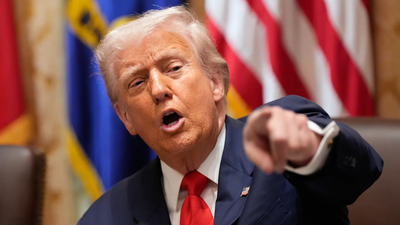WASHINGTON: Before President Donald Trump asserted that he had the constitutional power to refuse to release money that Congress had directed him to spend, another president made that same bold claim. It did not end well. “The constitutional right for the president to impound funds,” President Richard Nixon said at a 1973 news conference, was “absolutely clear.”Nixon said he had the unilateral right to block – or impound – billions of dollars that Congress had appropriated for medical research, higher education, public housing, the environment and other projects.In that era, Congress, jealous of its place in the constitutional structure, pushed back, enacting the Impoundment Control Act of 1974 to protect its power of the purse. Weakened by the Watergate scandal that would cause his resignation that year, Nixon signed the bill.In the second Trump administration, though, impoundments are back, in one of many signs that President Trump is trying to shift power over all facets of American life from Congress to the presidency.He is following through on a campaign promise to wage an assault on the Nixon-era law – one that can likely only be settled by the Supreme Court. “This disaster of a law is clearly unconstitutional, a blatant violation of the separation of powers,” Trump said in 2023. “Bringing back impoundment,” he added, “will give us a tool with which to obliterate the deep state, drain the swamp and starve the warmongers.”The Impoundment Control Act reinforced what its sponsors said the Constitution required: that the president must faithfully execute congressional commands, including those concerning spending. Among other things, the law required presidents to ask Congress for permission before refusing to spend, or “rescinding,” appropriated funds. The law gave Congress the choice of whether to grant those requests through new law. Later presidents followed the procedure, and Congress granted many, though not all, rescission requests.The Constitution gives Congress the primary role in govt spending, saying that “no money shall be drawn from the Treasury, but in consequence of appropriations made by law.” It requires the president to execute the laws faithfully.In asking the Supreme Court last month to let the Trump administration cancel more than $4 billion in foreign aid, D John Sauer, the solicitor general, said he was not pressing a constitutional challenge to the law. Rather, he said the law placed limits on who can sue over it and for what. In an unsigned opinion over the dissents of the three liberal justices, the court sided with the administration.Aided by a pliant Congress, Trump has thus far made good on his campaign pledge to use impoundments aggressively. The breadth of Trump’s claimed power is particularly salient given the shutdown, said Alan Morrison, a law professor at George Washington University who has filed briefs opposing the Trump administration’s spending freezes. In ending earlier shutdowns, Morrison said, the two parties made a deal and enacted legislation reflecting it. But now, he said, expansive use of impoundments undercuts Democrats’ motivation to compromise. “This time,” he added, “if you have a deal, the Democrats know that Trump is going to impound all what they want and spend all the things they don’t want.” Go to Source

There are lessons from Nixon era in Trump's bid to freeze spending


